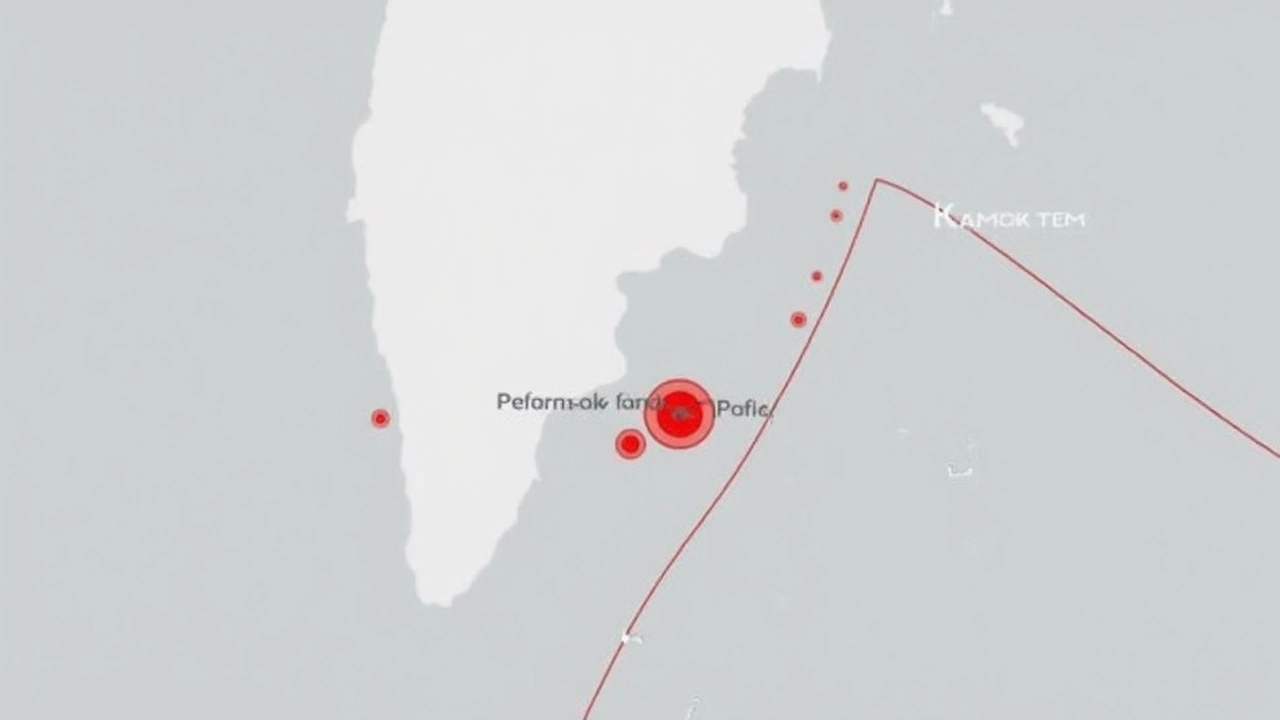Massive Quake Jolts Kamchatka: What Really Happened?
Just after midnight on July 20, 2025 (local time), a thundering magnitude 7.4 earthquake tore through the remote waters east of Petropavlovsk-Kamchatsky on Russia's Kamchatka Peninsula. The quake shook the region at a depth of about 20 kilometers underground, right along the fiercely active boundary where the Pacific and North American tectonic plates constantly grind against each other. Here, the Pacific plate pushes west-northwest—at an impressive speed of about 77 millimeters per year. That movement is anything but quiet, and it’s this relentless collision that brewed the violent earthquake.
The seismic activity was caused by reverse faulting—a process where the earth’s crust is forced upward, usually resulting from plates slamming into each other beneath the surface. It’s hardly a rare event for Kamchatka, sitting as it does on the notorious Pacific “Ring of Fire,” a hotbed for earthquakes and volcanic mayhem that stretches from Japan, through Alaska, and down both sides of the Pacific Ocean.
Tsunami Watch Sparks Panic, Then Relief
People half a world away in Hawai‘i were suddenly pulled into the drama. Just over an hour after the quake, authorities fired off a tsunami warning for the state at 9:03 p.m. HST on July 19. Initial models hinted that waves could roll onto Hawai‘i's shore as soon as 2:43 a.m.Things got tense. Would a wall of water sweep in during the night? But the anxiety didn’t last long—officials quickly ran the numbers, took a closer look at the seismic data, and canceled the warning within an hour. No tsunami was coming. For islanders used to living with the threat of tsunamis, this was a real-time test of alert systems, and in this case, they performed as designed: quick alerts, clear across oceans, followed by quick updates when the threat faded.
The people of Kamchatka, though, kept riding out aftershock after aftershock. The biggest, at magnitude 6.7 and 6.6, rattled nerves and probably knocked a few items from shelves. All told, at least 15 aftershocks of magnitude 4.0 or greater shook the area in less than a day, reminding locals that the initial shock was only the start of the story.
Seismologists monitoring the region took note: these clusters of quakes underscore just how lively—and risky—this seam in Earth’s crust remains. While there were no immediate reports of widespread damage or casualties in the sparsely populated region, the episode underlines just how exposed the Pacific Rim is to nature’s bluntest forces. For anyone living near these restless tectonic zones, the ground’s never truly still.

Write a comment